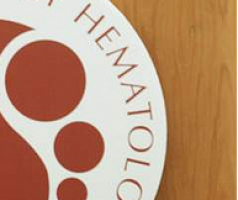
ASH have published new guidelines to help older adults with acute myeloid leukaemia (AML) and their health care providers make critical care decisions, including if and how to proceed with cancer treatment and the need for blood transfusions for those in hospice care.
Each year, nearly 20,000 people receive a diagnosis of AML.
The disease generally develops in older people; the median age of diagnosis is 68. As the "baby boomer" generation ages and the average demographic age in the United States increases, evidence-based recommendations for the optimal treatment of older adults with AML take on greater urgency and importance.
The American Society of Hematology 2020 Guidelines for Treating Newly Diagnosed Acute Myeloid Leukemia in Older Adults, developed in partnership with the McMaster GRADE Centre, offer treatment recommendations for this vulnerable population based on rigorous, systematic reviews of all available evidence.
The recommendations are guided by the principle that throughout a patient's disease course, optimal care involves ongoing discussions between clinicians and patients, continuously addressing goals of care and the relative risk-benefit balance of treatment.
If appropriate based on an individual patient's treatment plan, the guidelines recommend chemotherapy or other treatments over supportive care, and more-intensive therapy over less-intensive when deemed tolerable, among other common critical questions patients and clinicians discuss upon diagnosis.
Notably, they also outline the clinical benefit of palliative red blood cell transfusions for those who are no longer receiving anti-leukaemic therapy, including those in end-of-life or hospice care.
The guidelines are published in Blood Advances.
"These guidelines take providers through the conversations they have with newly diagnosed patients, almost in real-time," said Mikkael Sekeres, MD, chair of the ASH AML guideline panel and director of the Leukaemia Program at Cleveland Clinic Taussig Cancer Institute. "A discussion between patient and physician is instrumental to creating a personalised treatment plan, and these guidelines are unique in that they keep a patient's goals and wishes front and centre in that conversation."
AML prognosis in older adults is poor.
In fact, on average, a 75-year-old diagnosed with AML usually has a life expectancy measured in just months.
The prognosis for those up to 10 years younger is only slightly better, with most dying in the year or two following their diagnosis.
There is no single curative therapy, and while progress has been made in treating the disease, this population often has a high prevalence of co-morbidities and age-related decline in organ function that can lead to a greater likelihood of treatment toxicities.
In addition to the paucity of curative treatment options and high prevalence of co-morbidities complicating treatment in this patient population, some providers may be reluctant to recommend intensive therapies, or any therapy at all, because they fear toxicities in older patients.
And some patients may not wish to spend their valuable remaining time in the hospital.
"We recognise the serious issues that patients face, including the side effects and risks of chemotherapy and time in the hospital. Weighing these issues against possible benefits, including remission and extended life, patients can decide what treatment is consistent with their goals," said Dr Sekeres.
Many hospice organisations will not allow patients to receive blood product transfusions, often for economic reasons.
For AML patients in end-of-life and hospice care, the guidelines recommend that blood transfusions should be considered standard supportive care, as they can address palliative needs related to breathlessness, bleeding, and profound fatigue, as well as improve overall quality of life.
This guidance supports an ASH policy statement in support of ensuring Medicare hospice beneficiaries can access palliative transfusions.
The guidelines were developed by a panel of experts in leukaemia, geriatric oncology, quality of life, end-of-life, and frailty.
"We brought together this incredible spectrum of specialists to address every aspect of care so that people with AML can be empowered and informed as they decide," said Dr Sekeres.
The AML guidelines are the most recent product of a larger guideline development initiative for ASH, which includes a commitment to the timely update of existing guidelines and the development of new ones on a range of haematologic conditions.
In the coming months, resources to aid in the implementation of the guidelines will be added to the ASH website.
Source: American Society of Hematology
We are an independent charity and are not backed by a large company or society. We raise every penny ourselves to improve the standards of cancer care through education. You can help us continue our work to address inequalities in cancer care by making a donation.
Any donation, however small, contributes directly towards the costs of creating and sharing free oncology education.
Together we can get better outcomes for patients by tackling global inequalities in access to the results of cancer research.
Thank you for your support.